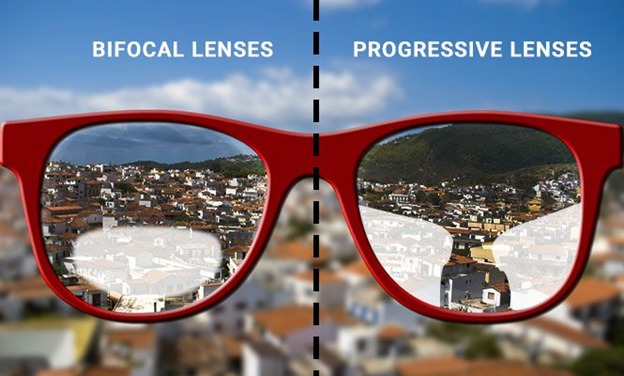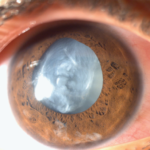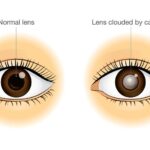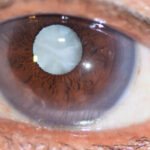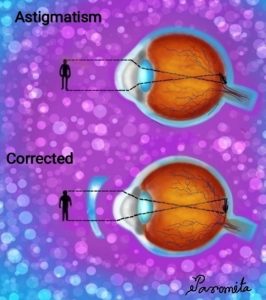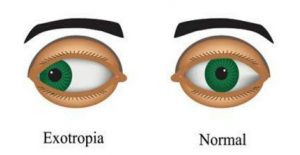Introduction –
Have you ever looked through a foggy window and struggled to see what’s on the other side? That’s a bit like what life can feel like when you have a cataract. Cataracts are one of the most common causes of vision problems, especially as we get older — but the good news is, they’re
treatable.
What is Cataract?
Inside your eye is a clear lens, kind of like a window, that helps focus light onto the back of your eye (the retina). When everything is working right, you see sharp, clear images. But as we age, or due to other factors, that lens can start to get cloudy. When that happens, it's called a cataract.
Think of it like this — over time, proteins in the lens break down and clump together. This
buildup blocks light from passing through clearly, and vision starts to get blurry, hazy, or dim.
Most cataracts develop slowly and don’t disturb your eyesight right away, but they can get worse
over time.
Sign’s Symptoms –
Here are some common signs that people often notice:
-Your vision looks cloudy, blurry, or dim — like someone turned down the lights.
-Lights seem too bright, or you notice a lot of glare (like from car headlights at night).
-You might start seeing halos around lights.
-Colors don’t look as vibrant as they used to; they may appear faded or yellowed.
-Reading becomes harder, especially in low light.
-Your glasses prescription seems to change more often than usual.
In some cases, people experience double vision in one eye.
Of course, these symptoms can happen for other reasons too, so always a good idea to get
your eyes checked if anything feels off.
The 3 Main Types of Cataracts
Not all cataracts are the same. Doctors classify them based on where the clouding happens in your lens. Let’s break down the three major types in everyday language.
1. Nuclear Cataract: The Center Gets Cloudy.
This is the most common type, especially as people get older. The words nuclear quot refers to the central zone (or nucleus) of the lens.
In the early stages, the lens may slowly turn yellow or even brown over time. This type often affects distance vision first — things that are far away may start looking blurry. Strangely enough, some people actually find their near vision gets better for a while, a phenomenon called
“second sight.” But this doesn’t last, and the lens continues to harden and darken. Nuclear cataracts usually develop slowly, often over many years.
2. Cortical Cataract: The Spokes Around the Edges
Imagine a wheel with spokes — that’s kind of what a cortical cataract looks like. It starts at the outer edge (the cortex) of the lens and slowly spreads toward the center. These cataracts create wedge-shaped or spoke-like white opacities, which can scatter light and
cause glare. People often notice trouble with night vision, and lights may seem more intense or cause halos. This type of cataract can develop faster in people with conditions like diabetes, but it’s also common as we age.
3. Posterior Subcapsular Cataract: The Back of the Lens
This one forms at the back of the lens, right under the capsule (a thin layer that surrounds the lens). Because of its location, it can block light more easily and cause problems with reading or seeing in bright light.
You might especially notice symptoms in sunlight or under indoor lighting. Night driving becomes tricky, and halos or glare can be quite uncomfortable.
The posterior subcapsular cataract tends to progress more quickly than the other two types. It’s more common in:
-People who take steroids (like for asthma or arthritis),
-Those with diabetes,
-Or people who’ve had previous eye injuries.
Causes –
Aging is the biggest factor, but not the only one. Other causes include:
– Diabetes
– Too much sunlight exposure without eye protection
– Smoking
– Long-term use of certain medications, like corticosteroids
– Eye injuries or surgeries
– Family history (yes, genetics plays a part too)
Sometimes, babies are even born with cataracts (called congenital cataracts), though that’s less common.
Conclusion –
Cataracts can sound scary at first, but they’re a normal part of aging for many people — and
they’re very treatable. The key is not to ignore the symptoms. If you notice changes in your
vision, don’t brush them off as “just getting older.” A simple eye exam could give you the
answers you need.
By understanding the types — nuclear, cortical, and posterior subcapsular — you’ll have a better
idea of what’s going on if your doctor mentions one of them. And remember: clear vision is
worth protecting.


